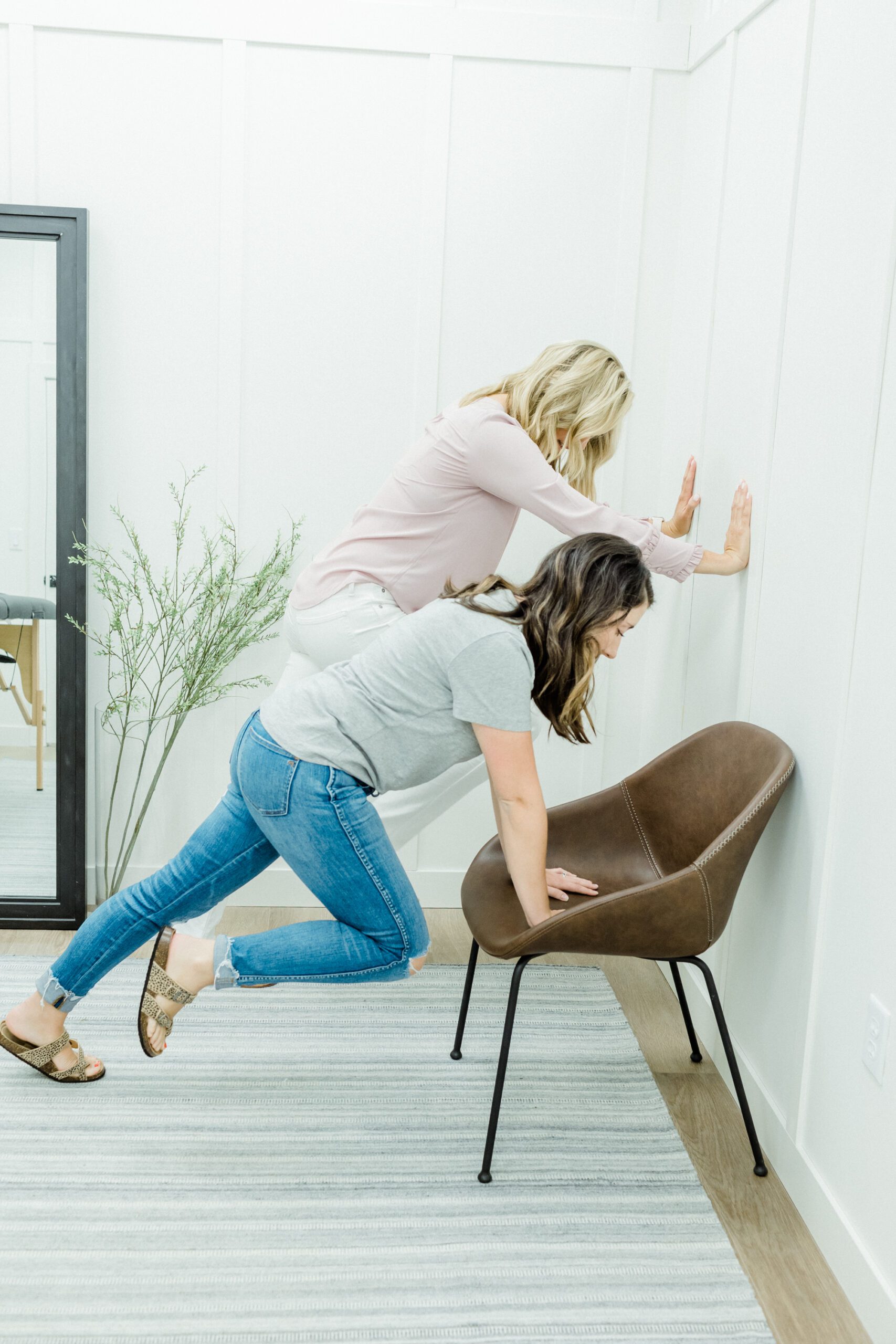Have you heard of Kegels? 10-20 years ago this wasn’t a common word and for most women, the answer would have been, “No.” Thanks to technology, the world wide web, social media, and increased awareness of women’s health issues (and men’s too, honestly), most women have at least heard of the term ‘Kegels.’ You know it has something to do with the muscles ‘down there,’ and you may have been told to do them while pregnant, postpartum, or perhaps if you’ve been struggling with peeing your pants a bit here and there.
But despite growing awareness for pelvic floor issues, the number of women I see that are doing Kegels correctly and feel connected to their pelvic floor is less than 50%. I’d guess that only about 1 in 4 of the women that enter my office feel comfortable with their pelvic floor and confident in their ability to do a proper Kegel.
Now, Kegels are by no means the end-all of pelvic floor physical therapy. There are hundreds of exercises we can do beyond Kegels! But Kegels are the starting point b/c they are a voluntary contraction of the pelvic floor, just like a bicep curl is a voluntary action of the bicep, or knee extension is a voluntary action of the quad muscle. You still need to know how to do it and it helps to have a connection with the pelvic floor for lots of things – not just so you don’t pee your pants, but also for stabilization during heavy lifting, sexual function/pleasure, and proper bowel/bladder habits among many others.
In short, knowing how to properly Kegel, or contract the pelvic floor is super helpful! But most women are still a little confused about how to do one or knowing whether they’re doing it correctly. If this is you, I’m excited to share a bit more in hopes that it can help you too!
When you do a Kegel, the pelvic floor lifts and squeezes together, such as when you stop the flow of urine mid-flow. When you bear down (such as when passing gas or having a bowel movement), the pelvic floor does the opposite – it lengthens and lowers.
If you feel like you’re doing them correctly, but you’re not finding them to be effective, here are a few things you may be doing wrong, and some ideas to help make it right!
- You’re using all the surrounding muscle groups vs. isolating the pelvic floor. The pelvic floor is the main muscle group we want to contract, but because most women don’t exactly know where their pelvic floor is or how to do a Kegel correctly, they end up squeezing EVERYTHING down there – most notably, the glutes, the inner thighs, and/or the abs. These muscles CAN at times be helpful in pelvic floor recruitment if weakness is present (this is why you cross your leg when you have to pee), but they do not have the same function as the pelvic floor, so when you start squeezing everything down there, the pelvic floor gets overruled by these stronger, bigger muscles and the entire contraction isn’t very effective.
- You only do your Kegels laying down or at stoplights. Someone somewhere gave women this great idea to do their Kegels before bed or at stoplights, and now we have a whole load of women who think this is where Kegels should be done. 🙂 I’ve heard this said numerous times, and I’m going to argue, that though doing something is better than nothing, doing your Kegels at stop lights or laying down isn’t going to be very effective b/c most likely you don’t like or have issues laying down or while sitting at stop lights. There is a place for learning Kegels in various positions, but ultimately you should train where you leak!
- You only train the pelvic floor, not the rest of the inner core. The pelvic floor is just one of four inner core muscles. The inner core is designed to work like a TEAM, meaning they don’t work in isolation, they actually are most effective when they work TOGETHER! So even though your issues may be “down there,” that doesn’t mean you should only train the pelvic floor. You actually need to train the whole team!
- You’re trying to strengthen a tight pelvic floor. About one in five women I work with are both weak AND tight. Now tightness can sound like a GOOD thing – don’t we want a nice tight pelvic floor so we don’t leak? Or have great sex? Actually no – you don’t want a tight pelvic floor – we want a pelvic floor that can MOVE – meaning it can both tighten AND relax, raise AND lower. We want it to be strong, but also able to move, and move quickly as needed! In fact, a tight pelvic floor will actually lead to worse leaking (try flexing your bicep all day long and then try to lift something heavy – your arm will be exhausted and give out!) and often contributes to pelvic pain, painful intercourse, difficulties with bowel and bladder habits, among many other things. If your pelvic floor is tight, we want to work on flexibility FIRST. Strengthening a tight pelvic floor will only make it worse. Once we’ve decreased tightness, then we can slowly begin to build strength.
- You only work on strength and forget about endurance and coordination. Strength isn’t the only thing we need. Our pelvic floor muscles also need good endurance and coordination. Endurance means the ability to stay contracted for an extended period of time. I find that my patients who leak randomly throughout the day, towards the end of the day, or towards the end of their workout or run most likely need work on endurance. And then we also need coordination. Coordination is our brain’s ability to contract the pelvic floor at the right time and in the right way. You can be strong and still lack coordination, which will mean you still can struggle with leaking even though you have great pelvic floor strength.
This list is just a start, but these are some of the main issues I see over and over again when I work with women who are struggling with pelvic floor issues. If YOU want more help, I’d love to work with you! You can 1. Schedule a 1-1 in-person or virtual visit, 2. You can join me in Pelvic Core, my 4-week online course, where we’ll train your pelvic floor the RIGHT way, addressing ALL of these issues, so you can say “so long” to your leaking and other pelvic floor issues for good! Click here to find out more!






